The Furniture: The Lady with the Van Paints a Crime Scene Into a Home
 Monday, April 25, 2016 at 10:00AM
Monday, April 25, 2016 at 10:00AM "The Furniture" is our new design series. Here's Daniel Walber...
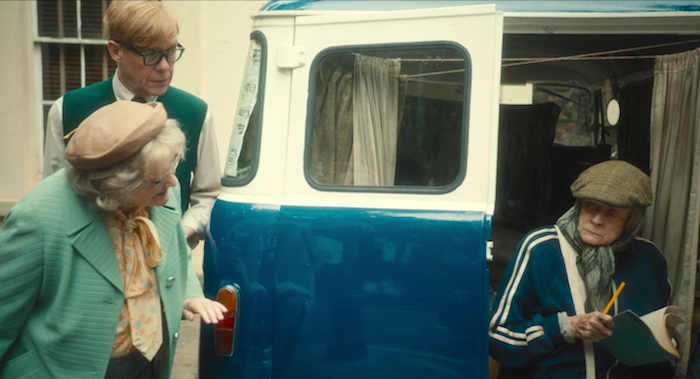
The Lady in the Van begins with a bloody hit-and-run accident. The title van-driving lady, played by Maggie Smith, collides with a young man and leaves him for dead. On the lam, bound by necessity to a vehicle that may also be a murder weapon, she finds her way to a quiet neighborhood full of artists and bourgeois intellectuals.
Then it turns into a delightful comedy about the social anxieties of Alan Bennett.
It’s a bit abrupt, to be honest. And it may take a fair while to warm up to the neurotic, Adaptation.-style doppelgangers that represent the split personalities of the playwright protagonist. The vans themselves, though, quite effectively capture a much more gradual transition, one that charts Mary/Margaret’s arc with care. What begins as an all-in-one murder weapon and crime scene becomes a home. [More...]
Of course, the initial character of the shabby old vehicle is one that emphasizes her homelessness and poverty. It’s a hideous shade of gray and it’s speckled with scratches and refuse from many a passing a bird. Jammed underneath it are the countless, overstuffed bags that inevitably accompany every homeless old woman in the collective imagination.
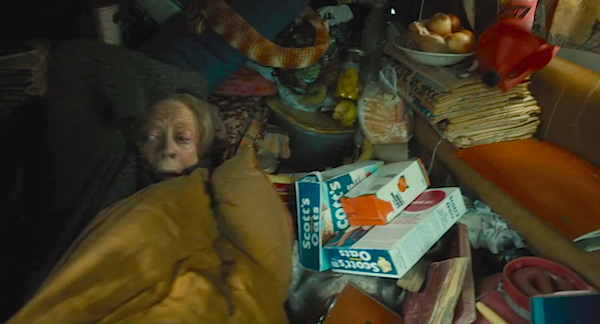
The rare glimpses into the van reveal similar clutter, including the obligatory old newspapers, old clothes and strewn about boxes of oatmeal.
So when she suddenly decides to paint her van bright yellow, presumably to help hide it from the authorities, it’s no surprise that the paint is full of unpleasant little lumps. She insists that she mixed it properly, but then accidentally dropped in some cake.
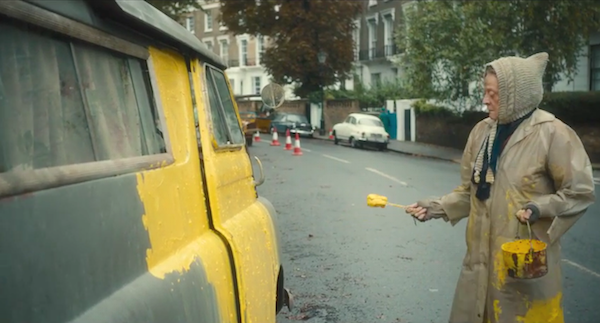
Roughness aside, she does get it painted, everything except for the roof. This omission becomes obvious in an unexpectedly delightful shot of blackmailer Jim Broadbent, dropping by to shake her down in the middle of the night.

But this paint job, however shabby, is the beginning of a long process of homey customization. When she manages to get a second, brand-new van, she paints that one bright yellow as well.
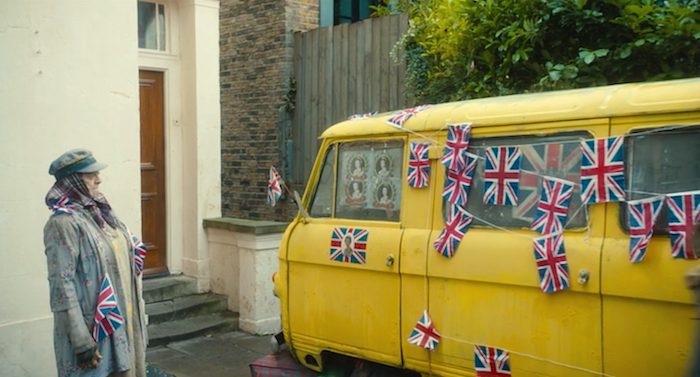
Once she’s been given permission to move into Bennett’s driveway, she even starts decorating. In one delightful scene she goes entirely overboard in a celebration of Queen Elizabeth II. It's left entirely unexplained. For the 1977 Silver Jubilee, perhaps?
A twice-former nun, she also expresses her faith by painting a big black cross on one of the rear windows. What began as a last resort and a constant reminder of a lingering, horrible crime, gradually becomes a home. Of course, everyone on this Camden Town street knows nothing about it. They all act as if she and the van have been together forever. Perhaps she was even born in it. And so no one quite notices this gradual, touching change. It's certainly never uttered aloud. Instead, this growing warmth and stability is something that we have to perceive on the vans themselves, the production design subtly contributing to an otherwise quite unsubtle movie.
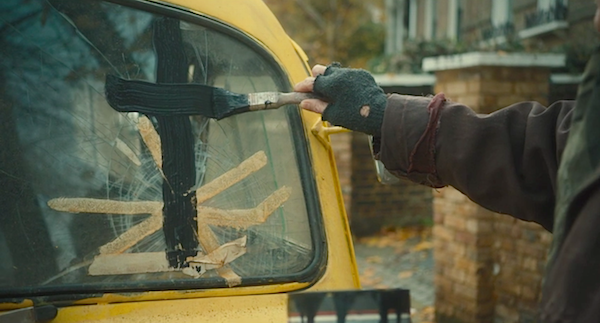
Previously on "The Furniture":
Star Wars: The Force Awakens (2015), Carol and Brooklyn (2015), Batman (1989), The Exorcist (1973), The Wonderful World of the Brothers Grimm (1962), and How the West Was Won (1962),



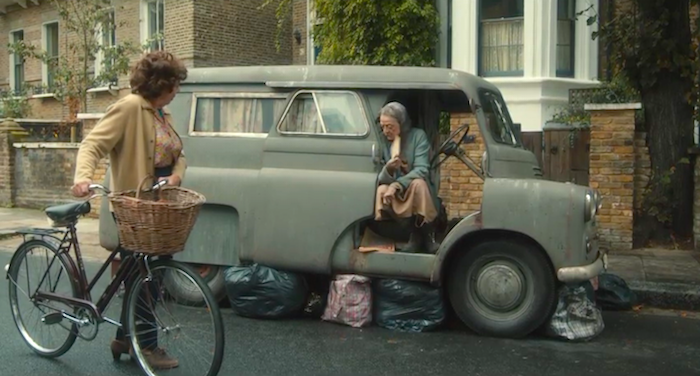
Reader Comments (4)
Thank you for this post - I was very moved by this film, but had not given proper consideration of how its design tells a story just as much as the words and acting. I would also give a shout out to the nicely detailed work on the interior of 'Alan Bennett's' house, which has a sort of shabby coldness that I though suited that character beautifully
I found this film was much deeper than the most recent Maggie Smith films - she wasn't just playing lovable old lady, or poor, homeless wretch. There was a depth and a dignity to her character and the film.
Just want to echo IanO on the subtle changes that happened to both the van and Alan Bennett's house. Great article about a film that pretty much got lost in the shuffle at Xmas.
i thought the film had a lot of tonal problems but reading this was a nice reminder of the film's best elements. Maggie Smith was so good in this... and not playing the same character she always plays.
They filmed this in the driveway, house and street in Camden Town where Alan Bennett lived in the 1970s and 80s where the events of the story took place.
The film and play include a moving comment about putting your life on hold while you wait for your parents to die. I saw this on stage in Sydney in the 1990s and watching the film now, aged 43, it's one of those stories that has a very different resonance depending on what age you are when you view it. It's easy to dismiss this as just the latest quaint Maggie Smith vehicle (ahem) but there's a lot more to the film than that.